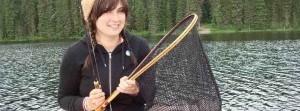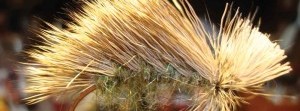
Edge of the World
The beginning of a thing is often not recognized as such until long after, or indeed until an ending appears on the horizon. Such was the case in the fall of 1994, when four dirtbags pooled their limited resources and headed north from Vancouver and the Kootenays to undertake a month-long sea-kayak trip in Gwaii Hanaas National Park Reserve. The Queen Charlottes moniker at that time still stuck to the maps like the peeling paint it was, but no amount of European paint could ever cover the magic of Haida Gwaii. At the time it was obvious that this was the adventure of a lifetime for the four of us, but for me the experience was to kindle a life-long love affair with Haida Gwaii and those islands at the Edge of the World.
The four of us borrowed and rented four single-person sea kayaks, a motley mix of nice but older fiberglass crafts and one roto-molded, spine-wrecking plastic kayak nicknamed the “SS Prickboat” for her unique blend of attitude and discomfort. With the boats strapped to a sketchy, home-built boat rack tied to the bed of my pickup, the road trip across the province only hinted at the adventure to come.
Our vagabond bliss of sleeping in parks came to a grinding halt in a Prince Rupert city park when we awoke to find much of our gear stolen from the back of the truck. The memory of this unpleasant event was beautifully eclipsed by a chance meeting in that same park with Captain Highliner himself. A bearded old salt complete with Sou’wester, mildewed old wool sweater, and gumboots. Our piles of trip food and gear strewn across the lawn piqued his interest, and he asked about our plans. He listened politely to our visions of grand adventure exploring Gwaii Hanaas, then proceeded to trim them down to size with a tale of his own solo row in a dory around the entire Haida Gwaii archipelago, decades prior. And we thought we were tough.
I recalled this meeting with a grin years later on a flight up to Haida Gwaii, where my seatmate was a keen fish biologist heading up to study the unique strains of trout and sculpins in the remote lakes along the West Coast of Moresby. Their isolation, he hoped, would provide a unique opportunity to study evolution in a situation not unlike that of Darwin’s famous finches on the Galapagos, where every island has its own, unique species of finch. Every lake, he hoped, would contain genetically unique species of fish. I dutifully bit my tongue as I thought of Captain Highliner’s tale of scrambling up to these same remote lakes, capturing fish in a bucket, and hauling them over the ridge to neighbouring lakes to make sure they were stocked as well. Nature untouched by the hand of man must be truly hard to come by if the lakes of Moresby’s west coast have been meddled with.
Re-outfitted entirely from the Prince Rupert thrift store after the heist of our gear, our first nights on the islands were spent at the mushroom-pickers’ camp at Mosquito Lake, an eye-opening glimpse into a darker, substance-tainted renegade lifestyle if there ever was one. By this time our rebellious escape to the wild coast was seeming more mainstream by the day, as we encountered the true fringe of the world that helps make the North Coast the vibrant node of culture it has been for the past 10,000 years.
There is little that compares to the stomach buzz heightened awareness of setting out on a new adventure. Maybe people do drugs, I have often thought, to try to replicate the hyper-reality and truly deep excitement of human journeys into the unknown.
To say we were unprepared would be generous. Of the four of us only Rowan had any real knowledge of bathymetry, winds, or tides, let alone the potential consequences of combining all three in the wrong measure. Nearly swamped on our first open crossing, we learned quickly why these things called “sprayskirts” were included with our kayaks, and from there proceeded to have just about every mishap in the sea kayak book short of catastrophic capsize.
We took shortcuts and stowed our food-filled kayaks away from camp, thinking we were being bear-aware, only to awake to find the kayaks ransacked, hatch seals shredded and much of our food missing as the infamous Burnaby Narrows bruin encountered more idiots. We rounded the northeastern tip of Burnaby Island while the ebb tide played against the southerly swell, and were surprised and very stressed to suddenly find ourselves out of sight from each other for minutes at a time in the troughs of deep, white-topped waves.
We even lost a boat one fine, flat calm morning. We still quote Jamie’s “Dudes, there are only three boats on the beach,” wake-up call that morning. A spring tide had very gently reminded us why you always tie up your boats. High water had picked up my kayak, a spare paddle, a pump, a small yellow dry bag, and paddling mitts and carried them away. The miracle of a windless day allowed us to paddle out in three directions in the remaining loyal kayaks and find the errant boat drifting out towards Hecate Strait and tow it home. Another miracle occurred a week or so later when, paddling up the coast I spotted a yellow object on the beach. Upon investigation I found not only my dry bag full of extra clothes but also the spare paddle, pump, and one of the two paddling gloves laid gently on the high spring tide line within a few hundred metres of each other, many kilometres from where they had been picked up.
If these physical adventures planted the seeds of my love affair with Haida Gwaii, the flora and fauna we encountered fertilized the soil. Daily encounters with some magical beast seemed to be the rule of the place, not the exception. In hindsight, paddling right up to a giant shark fin on the surface of the water might not have been the brightest idea, but we felt invincible by the time we encountered the four-metre shark sleeping on the surface. Nearly as long as the kayaks, it must have been a basking shark, but we didn’t hang around to find out. Minke, humpback and orca crossed our paths regularly, but these giants seemed somehow less so compared to the immoveable and unfathomable giant Sitka Spruce and cedar trees we encountered on-shore.
Sea lions are indeed territorial, we learned, after paddling up to investigate one of these giant mammals thrashing a salmon back and forth like a dog shaking a bunny. Noticing us, it slipped beneath the water to come up roaring just metres from our boats. Black bears stalked the shores, while bald eagles dove relentlessly for fish around us, one locking talons with a salmon large enough to prevent it from taking off, and we watched it swim desperately for the shore. We fished as well, and the tale of the giant red snapper we hauled from the depths continues to grow with the telling. That fish, and the salmon and crabs we caught, fed us for days on end, replacing the food lost to the bear.
But the treat that really anchored this place in our souls was the Watchmen at Hotspring Island. It was late in the season, and they were packing up for the trip back to town, inviting us to stay with them in the cabin at Hotsprings, and to stay at the tiny Tanu cabin on our way north as well. Our nights at Hotspring Island were a mix of relentless Haida Gwaii rain and ethereal, last-gasp-of-summer nights, where the phosphorescent trails of fish and seals lit up the water underneath our kayaks. I will never forget fishing for gúlaa (abalone) with the Watchmen, and the rare taste and texture of this special and vanishing treat, harvested at low tide.
They left us a cabbage and a cake, I recall, when they returned to town at the end of their season, both gifts much appreciated, although the cake was definitely a bigger hit. I will also forever be able to close my eyes and see the families of Tanu that filled my imagination during our stay in that ancient, now overgrown village site, children running through the moss, men hauling in fish or building canoes, and women preparing the bountiful harvest of Hecate Strait.
At the end of a month of paddling we straggled back to Moresby Camp and into Queen Charlotte, where were taken in by some locals for Thanksgiving dinner—a feast of local venison and cranberries.
In the end, Rowan, Ilja and I boarded the ferry for the mainland, but Jamie stayed on, living out the winter in an old milk van he bought for some ridiculously low amount. In the intervening 28 years I have returned to Haida Gwaii over 15 times, occasionally as a journalist but mostly as a sea-kayak guide taking paddlers through Gwaii Hanaas National Park Reserve in search of the magic that anchored this Kootenay boy to these emerald islands at the Edge of the World.



